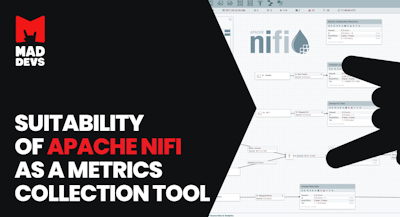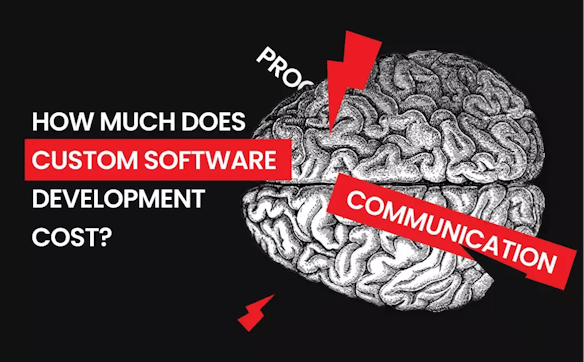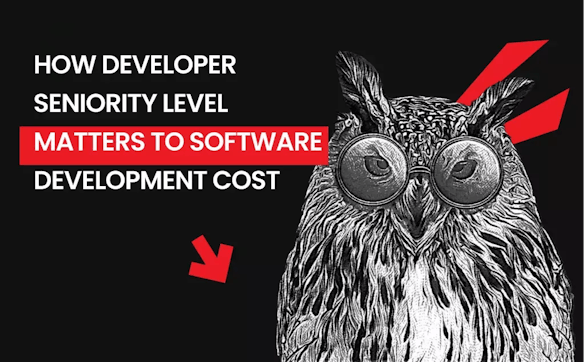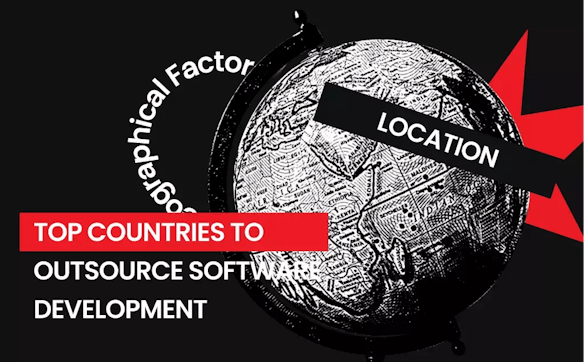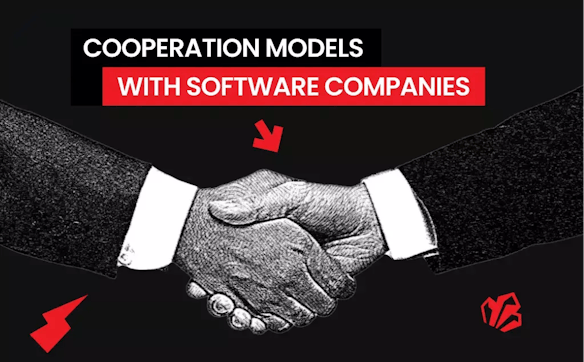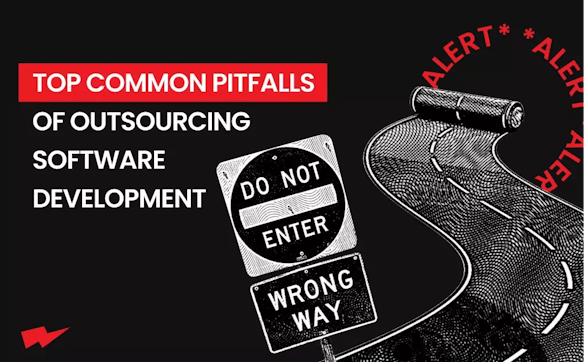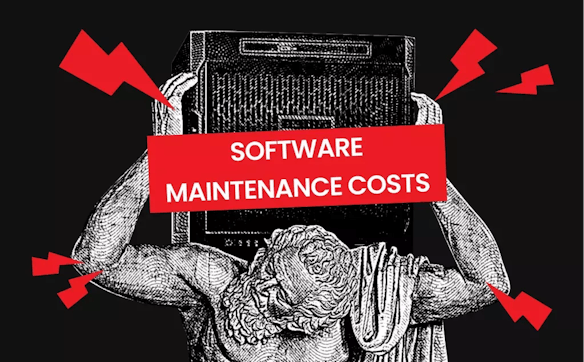In the early days of the software industry, developers were working alone on their products for years. And one day, their products have taken over the market and made their creators rich and famous. Of course, this was deserved. But it is worth noting that this was not because their products were the best, but rather because they were unique at the time.
However, the software industry was rapidly changing, becoming more extensive and complex. The competition was growing, and the struggle for users' attention becoming much fiercer. So the market became filled with better and better products and services. And we got more and more used to the constantly increasing quality and amount of them. Now we're not willing to compromise at all, knowing that we can always find something better.
This is all possible because more professionals from different fields, not only technical, are getting involved in development. Now any competitive product is the combined work of developers, designers, analysts, marketers, and managers. This is just a short list of specialists who have found a new home in the software industry.
For example, when Steve Jobs was creating the Macintosh, he even invited zoologists who understand the anatomy to help him find the best proportions for the future device that fit perfectly.
But the more specialists are involved in software development, the more processes it includes, and the more difficult it is to manage them. And each process must be treated with special attention. Because each of them can be the main factor of success and failure of the future product, you need to know the pitfalls of software development in general, and particularly the main pitfalls of project management.
At Mad Devs, for example, we pay individual attention to each process in development. From specifying goals and the most suitable means to achieve them to using the best design, development, testing, and support practices. And this careful attention makes our customers want to contact us again and again. After all, they can always trust transparency, flexibility, stability of development, and the high quality of the final product. You can see this by looking at any of our cases.
Poor estimation
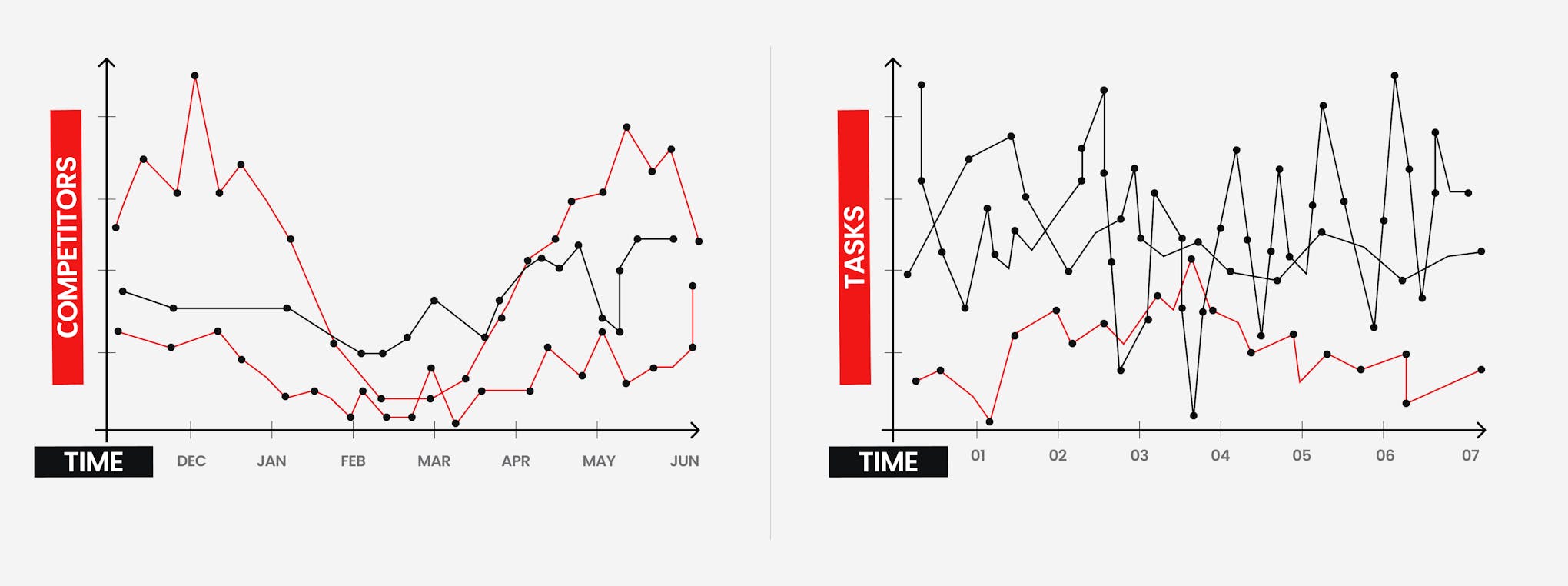
Industry
As we said earlier, any industry is overflowing with solid players and great offers. If you don't consider all the details, you can go unnoticed and waste a huge amount of time and money.
It is worth noting that this is one of the most common pitfalls in software development. After all, the presence of a good idea can quickly make you believe that you are exceptional. And the availability of resources for its implementation can lead to hasty decisions, dubious conclusions, etc.
Instead, it would be best if you had an in-depth analysis of potential competitors or partners and their capabilities, potential customers and their needs, and all the specifics of the industrial area in which you want to make your offer.
Goals
Abstract goals cannot be achieved. The processes of achieving these goals will require an infinite amount of effort, time, and money. And the result will either be missing or will be ambiguous.
If a team of managers and developers is willing to take on such a project, you shouldn't trust them. Or they are not experienced enough to point out the gaps. Or they are not conscientious enough and will take as much time and money from you as possible, not caring about the final result.
Therefore, goals must be absolutely specific, achievable, and measurable. So the processes can be fully controlled, then bring the desired and expected results.
For example, Mad Devs are extremely serious about specifying and setting goals. We have a separate stage for this, which precedes the final product's release, development, and even design stages. You can learn about each of these, as well as exactly what they consist of, on our website.
Means
If the means do not match the ends, their achievement is either highly questionable or not possible at all. After all, properly defined and used means are just as important as the goals themselves.
This pitfall often leads those who swim in the trend waves to choose a universal or popular technology, components, or tools. And this can cause a shipwreck. Even if the goals are well set, the specialists are high level, and a lot of time and effort is spent, the project becomes technically infeasible.
Instead, a great deal of attention must be paid to the choice of means, no less than the definition of goals. This requires a comprehensive evaluation of technical specialists, project managers, and business analysts. And when the goals are strictly matched to the means and the best possible means are chosen, you already have an excellent business and technical foundation for a successful project.
Resources
Without a proper budget estimate, even the most promising project can cease to exist at any time.
If you misallocate the budget, it can suffer losses before its release and start saving. First, what may seem insignificant is the number of work and communication tools needed. Then on the essentials, like the level and composition of the team, research and testing, and so on. And all these things will more and more degrade the quality of the product and delay the release date.
Instead, it would be best to immediately estimate what budget will be needed for all the upcoming and possible processes. Leave a contingency budget for unforeseen processes. And allocate it in great detail, as well as constantly monitoring its spending.
Poor tracking
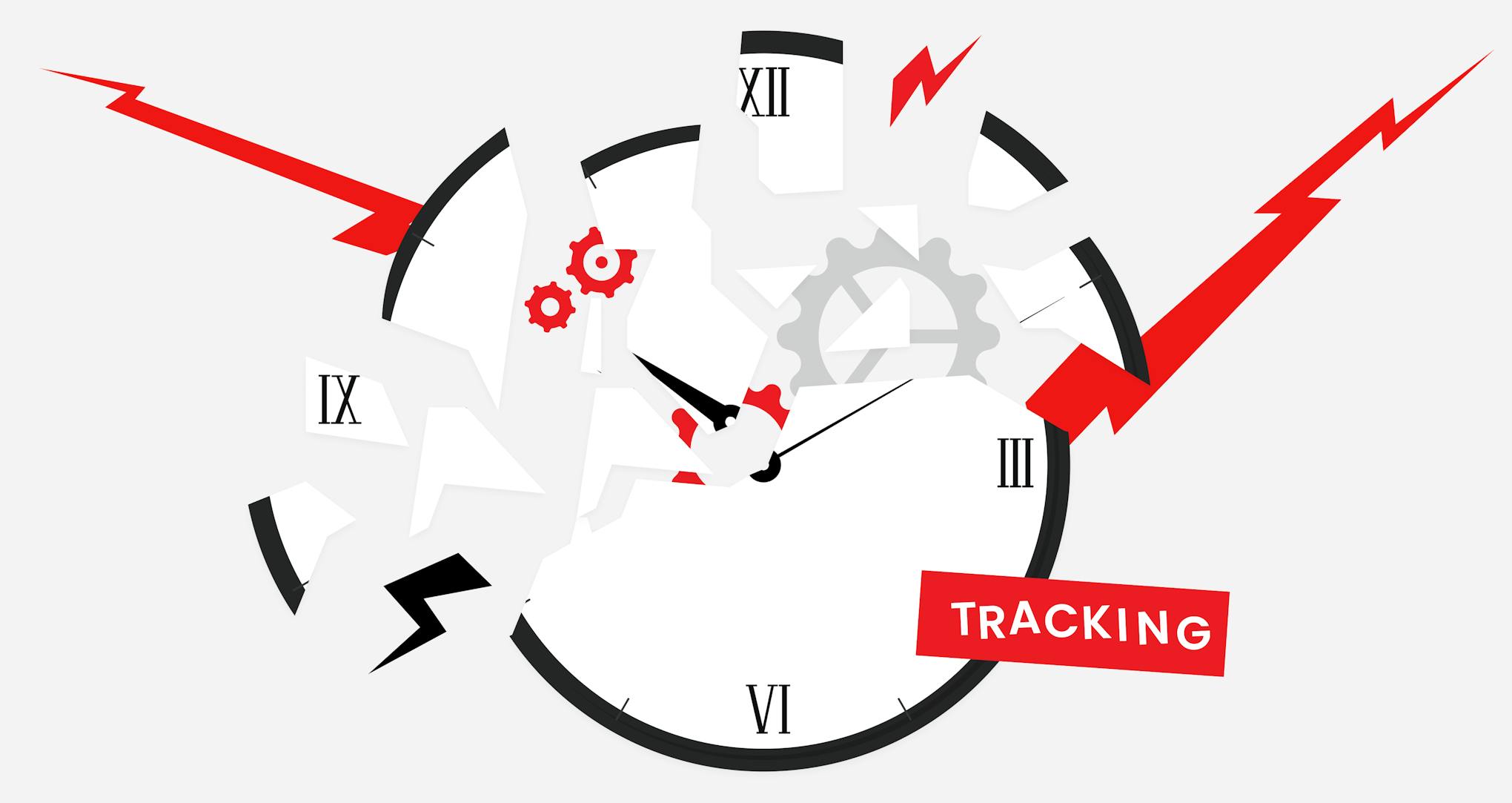
Time
Without the estimation of time, there can be no clarity about what is happening.
If the estimation of the time of the performed work is not accurate, it is impossible to talk about any planning and timing of tasks and other aspects. Also, without accurate time estimation, it is impossible to use Agile practices and tools like Scrum and even Kanban. And they are fundamentally important in software development.
Any sufficiently advanced technology is indistinguishable from magic. Therefore, it is necessary to do accurate and regular timekeeping on each task, employee, and project as a whole. And then, you will discover amazing practices and tools that are so precise that you can foresee or detect any aspect of work processes and immediately influence them.
For example, Mad Devs actively use Agile, particularly Scrum and Kanban, which makes our work transparent, predictable, and incredibly effective.
Efficiency
Without performance measurement, time tracking does not show its true potential.
This is a frequent pitfall of project management when deadlines are set, schedules are set, time is estimated. But as long as no one gets past all the deadlines, no one thinks it's necessary to measure productivity.
The most frustrating thing is that you can already almost automatically measure productivity using reports in services like Jira by measuring time. You need to interpret the available metrics and decide what to do correctly. Not only can you afford to do everything on time, but you can detect the risks of exceeding them in advance. Detect blockers that inhibit development in the form of poorly described or divided tasks, unnecessary or missing processes, sudden complexities and individual team members, and more.
For example, Mad Devs extensively uses the many default and custom Jira reports that give us an in-depth view of all development processes. We advise you to read our article on how to work with Jira to drive results.
Poor communication

Channels
You should not use the regular channels of communication.
A very common pitfall is when social networks and messengers are used for professional needs. It may seem like a good solution because they are free, handy, and everyone has an account there. But they may not be efficient, functional, or just not secure enough.
Using personal profiles, employees confuse their private and work conversations, can often miss an important message from a coworker, and so on.
Also, ordinary messengers do not have a wide enough functionality to analyze and improve communication, especially when it comes to integrating third-party or custom components.
And, of course, only the use of corporate accounts and corresponding communication channels can give you the necessary degree of control and data security. After all, even the owner of a personal account may not know that it has been hacked and his data is being stolen.
Instead, you should only use corporate accounts for email and other services that give you access to company and project data. And also appropriate channels of communication, such as Slack, which has a lot of features for working communication and a lot of integrations.
For example, in Mad Devs, we use Slack to make our communication easy and effective so every employee can easily find or give any information on the project. We also successfully use one of our developments called Comedian, which reminds us to write standups, analyze employee data, and make a visual distribution of performance indicators for the period. You can read more about Comedian in this article.
Meetings
Without meetings, the quality of communication becomes fundamentally lower.
This is a pitfall in project management that carries a double danger. It is like an algae-covered underwater stone, on which one can not only crash but also slip.
After all, the processes can hurt the lack of meetings as their excess. That is, purely asynchronous communication can cause feelings of depression, apathy, and other unpleasant mental problems.
Also, it can cause some confusion in the sharing of tasks, responsibilities, and other things if not voiced in one place at one time for everyone.
An excess of meetings can take up too much time. The team can fall into the trap of discussing solutions to a problem repeatedly, looking for the best way instead of trying one.
Also, an excess of meetings can introduce ambiguity in allocating tasks and responsibilities when they are reassigned several times a week during another discussion. Project members need to change focus, and changing focus also requires separate effort and time.
The best solution is a proper combination of synchronous and asynchronous communication. It will save a huge amount of time, make development stable, transparent and efficient, and maintain the mental state of the project participants.
For example, in Mad Devs as asynchronous communication, all the project members write daily standups about what they did yesterday, are going to do today, and what blockers there are related to these tasks. This way, every project member knows what is going on in general.
We also do a bi-weekly retrospective where we discuss in detail the work done to share our successes, concerns, recommendations, and so on. In addition, once a month, we have a 1-on-1 meeting with the project manager, where the project members can share their thoughts on any topic and get support, recommendation, or just to be heard. And, of course, each project member can organize a meeting on their initiative.
We suggest you read our article about what types of meetings we hold to learn more about this topic. We describe in detail all the meetings, why we need each of them, and how we carry them out.
Standards
Without common standards, there is no common understanding.
This is a frequent pitfall of software development, especially in young companies. Everyone wants to be like Google, where all communication and work, in general, seems so freely casual.
But in fact, it may only be so in individual cases, not as a whole. Otherwise, many ambiguous situations, misunderstandings, and even conflicts can arise. For example, standards may include a prohibition against the use of unpleasant or incomprehensible abbreviations, provocative or false statements, and so on.
That is why standards of work and communication are indispensable, because without them, you are sinking into a storm, and no beacon on the horizon should lead you out of it.
Poor competence

Analysts
Insufficiently competent analysts can underestimate or overestimate a project.
Such a pitfall is not obvious. After all, when people think of a quality product, they think about developers. But analysts stand at the bottom line of how successful the product will be. And if they are not competent enough, it creates a problem at the very foundation of the project.
The market, competitor, partner, and potential project research results can be wrong. And even if the results are correct, their interpretation and the predictions based on them may be wrong. It will manifest itself in incorrect budget allocation, the definition of goals and means, the composition and level of the team, and everything else.
Therefore, analysts must be as competitive as possible in their field, preferably in related areas.
For example, we at Mad Devs provide not only software design, development, and support services but also analytics for potential projects. Before development begins, we help determine the goals, means, necessary budget, team composition, and other essential things.
Managers
Incompetent managers can make any project fail.
The pitfall here is the same as in the previous case. Project managers play one of the key roles in software development. And if their competence is insufficient, it doesn't matter how great the project's potential is, how good the tools are and how skilled the developers are.
The project's potential will not be fully discovered. Resources will not be spent in the best way. And developers will have ongoing problems with getting tasks done in time, setting proper deadlines to complete them, and so many more complexities.
In the end, you will have a ship where all the rowers are rowing in different directions, breaking their oars on the rocks and constantly getting caught in storms.
So project managers need to be as competitive as possible. They need to have enough technical, analytical, and humanitarian skills to speak the same language to everyone, from developers to customers.
Designers
Insufficiently competent designers can derail the functionality of the product.
This pitfall is more like an iceberg. After all, many people still treat design as a pretty picture that makes the product brighter than the rest. And it's to be commended that the vast majority of companies get it right. But attraction is worthless if the other aspects of design are weak.
In that case, users may be unpleasant or uneasy using the product as a whole, and they'll stop doing it even if its functionality is excellent. All it takes is a product with similar functionality but a more perfect and more comfortable design to come along.
Moreover, users may not even use most of the features if the design is not done properly. They won't find the features or understand how to use them.
It is enough to remember the story about the release of the first iPhone, which could not shoot video, unlike its competitors and many other things. But this did not hinder its sales at all. And that's because the design, from industrial design to graphic design, was amazing.
Design is one of the primary pillars of your product, which defines it both externally and internally. It's much more than the style of picture, sound, or text. It is the logic of your entire product and is either close to perfect or infinitely far from it.
It is the ship's frame that defines its basic characteristics and carries the sign on its sails. Therefore, designers should have maximum competence, including knowledge of the world's best practices, technical expertise, and aesthetic perception.
Developers
Without competent programmers, things just won't work.
This is one of the obvious pitfalls of software development, but a huge and complex one. Yes, a project can have great commercial potential and an excellent internal and external design, but it won't be used if it doesn't work correctly.
There is no sense in listing what can go wrong in the code if the developer is not competent enough. It deserves a separate article and a very large one.
But in general, it can be said that not all working code is good working code. Any teenager today can build their website or app, but how fast will it work? How stable will it work? How secure will it store data? It all depends on exactly how the code is written.
A competent developer knows everything essential, from the basics like algorithms, data structures, patterns, architectures, global best practices for writing code, and much more. Not just a set of ready-to-use technologies.
These are the true seamen on your ship who have seen both storms and calm harbors. Who survived in the ocean of software development both on huge ships and on lonely sloops.
For example, we at Mad Devs work with real professionals from all over the world who have something to share. Which they actively do by speaking at various conferences. We offer you to see how simply they talk about complex things because they know them from all sides.
Poor atmosphere

Neglect of human rights
The disregard for human rights is, oddly enough, still a problem.
We do not want to start a heated discussion on this topic, but it is worth noting that software development is still one of those areas where sexism and other forms of disrespect for human rights and labor can be found.
Some companies still consider men to be the best developers and women to be good designers. But women are no less intelligent, and men lack good taste. The entire civilized world realized that these looks, gender, and other aspects have nothing to do with a person's potential, inclinations, experience, and knowledge.
Also, to meet deadlines and solve unexpected difficulties as quickly as possible, some companies neglect the rights of people regarding the work schedule and force them to overwork. But mistakes in setting tasks, setting deadlines, and so on should not be paid for by those who perform these tasks.
At Mad Devs, human rights are sacred, and no one dares even think of infringing on those rights. Everyone has the same opportunity to express their opinions openly, even if the employee's position is lower. Moreover, we always encourage initiative and listen carefully to every voice. That is why our employees' physical and mental well-being is always at an all-time high.
Lack of rewards
Lack of reward takes away the incentive.
A person does something well only if he has a positive incentive to do it. And the best motivation is a reward, in any form.
This does not mean that the person is bad. It's just the way the human brain works. It saves the body's energy if it does not see ways to replenish it.
That is, no one will knit a fishing net for weeks if it does not bring a lot of fish. Many people value recognition, approval, and other mental rewards much more than material benefits.
Therefore, it is vital to let employees know that their efforts are seen, and their results are noted. It is necessary to express appreciation for employee initiative and engagement. And be careful to maintain the incentives that make their work productive.
Lack of learning
This is a very common pitfall of software development that even large companies can't always cope with.
One of the most common reasons for an employee to move to another company, even if they have a great salary, position, and team, is when they don't see their future growth.
And if such an employee leaves for another company, it can create a huge gap that will have to be filled by other people. All of this can affect processes and require unexpected changes in their organization.
It's like a rower who has learned to row with one hand and is not given any other tool for it. But if the rower wants to learn one more tool and you can't give it to him, he will move on to another ship.
So, in addition to incentives for good work and learning, you also need to give them the resources they need to learn and the opportunity to demonstrate their new knowledge and skills.
In Mad Devs, we not only give resources and tools for learning new things, but we also give the opportunity to prove it on our internal projects. Also, an employee can always come up with an idea for a project and gather a team who would be imbued with the idea and would be able to support it. That's how we had a fantastic service, which we recommend you to get acquainted with.
Bottom Line

Here we have talked about what are 5 common problems in the software development process. But there are many more, and each could take up a whole individual article. And as you may have noticed, there are no primary or secondary ones. Literally, everything is important here, and without proper attention to each one, nothing will work properly.
As the greats said, professionalism is evident in the details. Attention to every aspect, no matter how insignificant it may seem, determines success from failure.
Therefore, we wish every ship in this vast ocean to sail to meet discoveries, fully prepared for anything. Also, Mad Devs, we'll always give you the best advice and expertise to help equip and guide your ship in the best way.


